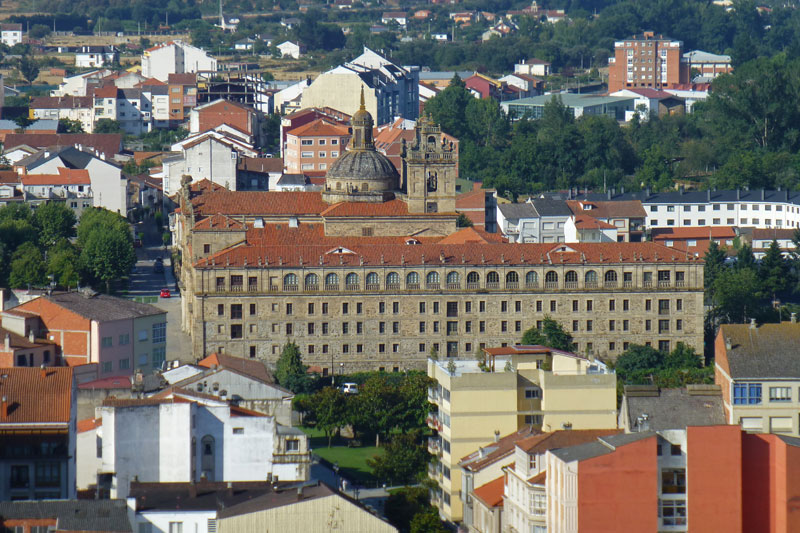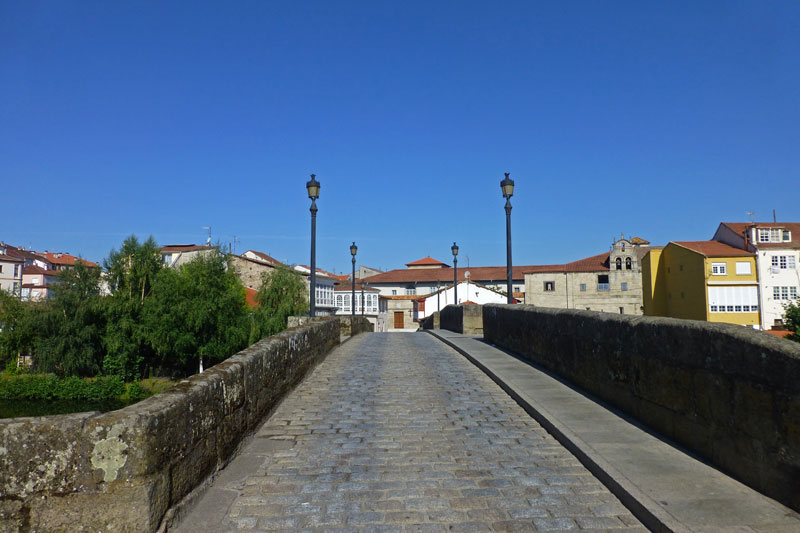03/17/2020 Website Que ver en el mundo (What to see in the world) goes into Monforte de Lemos, capital of the Lemos and Ribeira Sacra region. The publication makes the following reference to the History of Monforte, “Its origins must be found in the Paleolithic, when the region was inhabited by the Lemavo tribe. On the Cerro of San Vicente was located the Celtic Castro Dactonio fortress, from that time comes the name of Lemos.
The Romans left as a legacy the name of Monforte, originally called “Mons Fortis” or “Monte Fuerte”. Later came the occupation of Swabians, Visigoths and Muslims who devastated the city. The Benedictine Order was in charge of repopulating the area, leaving in its wake an important Romanesque legacy. At that time the Jews were established, becoming a very influential congregation.
Officially the foundation took place on April 10, 1104, by Count Fruela Díaz. The monks gave part of the land to the counts, who built the San Vicente Castle. In fact, the legend of "The Crown of Fire" is very famous. It is said that Abbot García, when the count was away, escaped through a passage from the monastery to the castle to sleep with his wife, or his daughter, it is not clear. When the count found out, he invited the abbot to a hearty meal before crowning him with a red-hot iron crown. "
In the city of Cabe, visit the Monastery of San Vicente del Pino, with its Homage Tower and its County Palace. It makes a stop at the Nuestra Señora de la Antigua College, “Known as El Escorial of Galicia, it stands on the banks of the Cabe river. It was built at the end of the 16th century, by Cardinal Rodrigo de Castro. Inside, the walnut wood altarpiece by Francisco Moure, dedicated to the Virgin Mary, stands out. On one side is the tomb of Cardinal Rodrigo de Castro, on it there is a praying statue of the founder, work of Juan de Bolonia.

It is a Herrerian building with 110 meters of front, for its construction it took three centuries. In its beginnings it was run by the Society of Jesus, who founded the Royal Studies Seminar. But after the expulsion of the Jesuits it passed into the hands of the House of Alba, they donated it to the Piarist Fathers."
Then he goes to the Convent of Santa Clara “famous for hosting one of the best museums of sacred art in Spain. It was founded at the beginning of the 17th century by the VII Countess of Lemos, since then it has been occupied by the Poor Clare nuns.
The Museum of Sacred Art is housed in the old hospital, which can be accessed from a door attached to the convent. It preserves a large number of works of sacred art, highlighting two carvings by Gregorio Fernández, the Reclining Christ and the Immaculate. There are also magnificent pieces of jewelry, reliquaries or liturgical clothing."
What to see in the world follows his visit to Monforte in the Jewish quarter and the medieval town; the Old Bridge, built in the 16th century by the master stonemason Pedro Rodríguez Remberde. It also goes to the Galician Railway Museum, which reviews the history of one of the most important 19th century railway junctions in Spain.

The publication is completed with information on the city's festivals and gastronomic proposals, “Traditional cuisine is marked by its location in the interior of Galicia, with pork and beef being widely consumed. Even so, the star product is á feira octopus, not in vain it is said that in the interior of Galicia the best octopus is eaten. Another very useful option is the Galician empanadas, they can be of iscos, meat, tuna, cod, scallops, etc."
Access the original publication here
